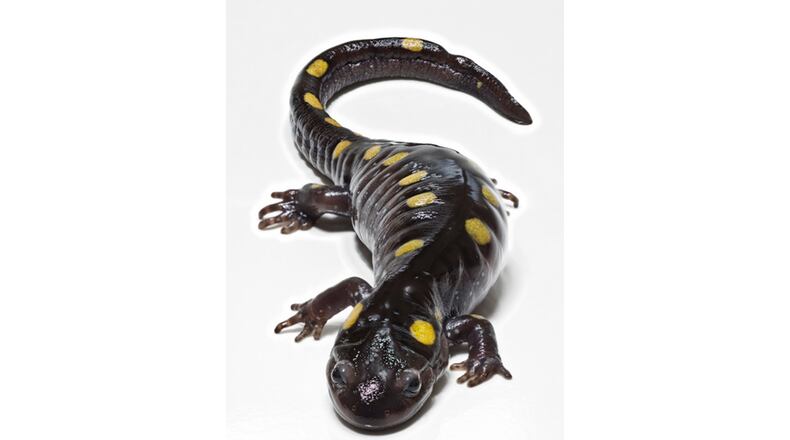A day after some heavy rain last week, I was slogging through some woods in Cobb County and found myself having to detour around several small, rain-filled pools.
They made my trek more difficult. Even so, I was glad they were there because these shallow, temporary pools are critical for wildlife, especially for several species of frogs and salamanders at this time of year.
Other names for the wetlands are vernal pools and ephemeral ponds because they hold water only part of the year, mostly in winter and early spring. Isolated from other bodies of water, they usually are little more than depressions holding rainwater on the forest floor. They may be a foot or so deep and as small as a good-size puddle or as large as an acre.
Come midsummer, though, most of them will dry up with the season’s heat and lower rainfall — which, along with their isolation, make them inhospitable to fish.
And that’s what makes the temporary woodland ponds important to frogs and salamanders. Fish, if present, would quickly gobble up frog and salamander eggs, jeopardizing the amphibians’ survival.
One species dependent on the fishless pools is the spotted salamander, found mostly in North Georgia. It grows as long as 9 inches and sports large yellow spots from head to tail on a black body.
Spotted salamanders spend most of their lives in underground burrows. But they emerge in February and may travel several hundred yards at night to mate and lay eggs in an ephemeral pool. A female lays three to four egg masses of about 250 eggs each, and attaches them to submerged twigs or aquatic vegetation by means of a jelly coat. The coat helps protect the eggs from cold and pond drying.
After breeding, the adults go back underground, often in the same burrows. Their eggs hatch in four to eight weeks. About two months later, the tadpole-like larvae transform into adults that can live for 20 years or more.
Some other common Georgia amphibians that rely on vernal pools during their life cycles include the marbled salamander, mole salamander, wood frog and American toad.
IN THE SKY: From David Dundee, Tellus Science Museum astronomer: The moon will be new on Wednesday. The only visible planets now are Mercury, Venus and Mars, low in the east just before sunrise. Mercury will appear near the moon on Monday.
About the Author
Keep Reading
The Latest
Featured



